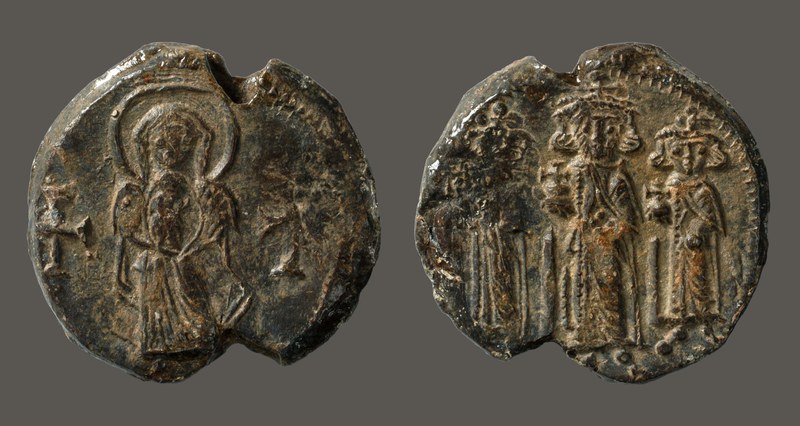
Now the men of the Anatolic thema came to Chrysopolis, saying, “We believe in the Trinity. Let us crown all three!”
Theophanes, Chronographia, 668/69
Constantine IV, the eldest son of Constans II, immediately faced the problem of a military revolt in Sicily—the same revolt that had brought down his father. Leaving Constantinople, Constantine sailed to Sicily, won over the rebels, and brought his father's body back to the capital. For the first thirteen years after the murder of Constans, Constantine and his brothers Herakleios and Tiberios ruled jointly. Their cooperation ended when Constantine had his co-emperors deposed and mutilated, probably in response to a conspiracy. For Constantine this cleared the route to the throne for his young son, Justinian. The external troubles of Constans’s reign were generally handled diplomatically by his successor. Constantine had to suffer a four year siege of Constantinople by the caliph Mu’awiya in 674–78. Eventually the Arabs withdrew after their army proved unable to assault the walls of the city and the Byzantine fleet, using the new weapon Greek Fire, destroyed their fleet. Following the failure of the siege, the first major setback the Arabs had faced in forty years, a thirty-year treaty was concluded with Mu’awiya. Peace was also assured on other boundaries through diplomatic means: Bulgarian settlement south of the Danube was permitted, and treaties were signed with the Avars and Lombards. Constantine summoned the Sixth Ecummenical Council in Constantinople to try to resolve the difficulties left over by his father's attempts to bridge the gap between Chalcedonians and Monophysites. To a large extent this issue had become increasingly unimportant as the territories containing the Monophysite populations all lay in Arab hands. As a result the council reaffirmed the Chalcedonian position and the matter was laid to rest. Constantine replaced the small and badly-struck (if plentiful) follis of his father’s reign with an eighteen-gram standard. Constantine died in 685 of dysentery, and was succeeded by his son Justinian II.

Seals for the period of co-rule are at first glance nearly indistinguishable from those of the later part of Herakleios’s reign. Differences include the shape of the face and the relative definition of beard hairs, with those of Constantine and his brothers more oblong and sharper, respectively, than those of Herakleios and his sons. After the deposition of Herakleios and Tiberios in 681, however, both the seals and coins adopt a new, higher-quality design, hearkening back to the fifth and sixth century. Constantine is depicted as a quarter-turned imperial bust, wearing a cuirass and holding a spear and shield with horseman device. This is noteworthy, as it demonstrates an attempt to visually connect with a more glorious Roman past: the Age of Justinian (note also Constantine’s choice of name for his son). In addition, only Tiberios III (698–705) and Isaakios I (1057–1059), warriors both, would be depicted with military garb or paraphernalia on their seals after Constantine.























































